Timeless Treasures: Bangkok's Historic Gems
Explore the beauty of Bangkok's old and stunning architecture on this captivating free walking tour, showcasing the city's rich history and culture.
Time
5 Hours
Stops
10 Places
Distance
5.0 km
Wat Pho (Temple of the Reclining Buddha)
Start your journey at Wat Pho, one of Bangkok's oldest temples, famous for its giant reclining Buddha statue and stunning architecture.
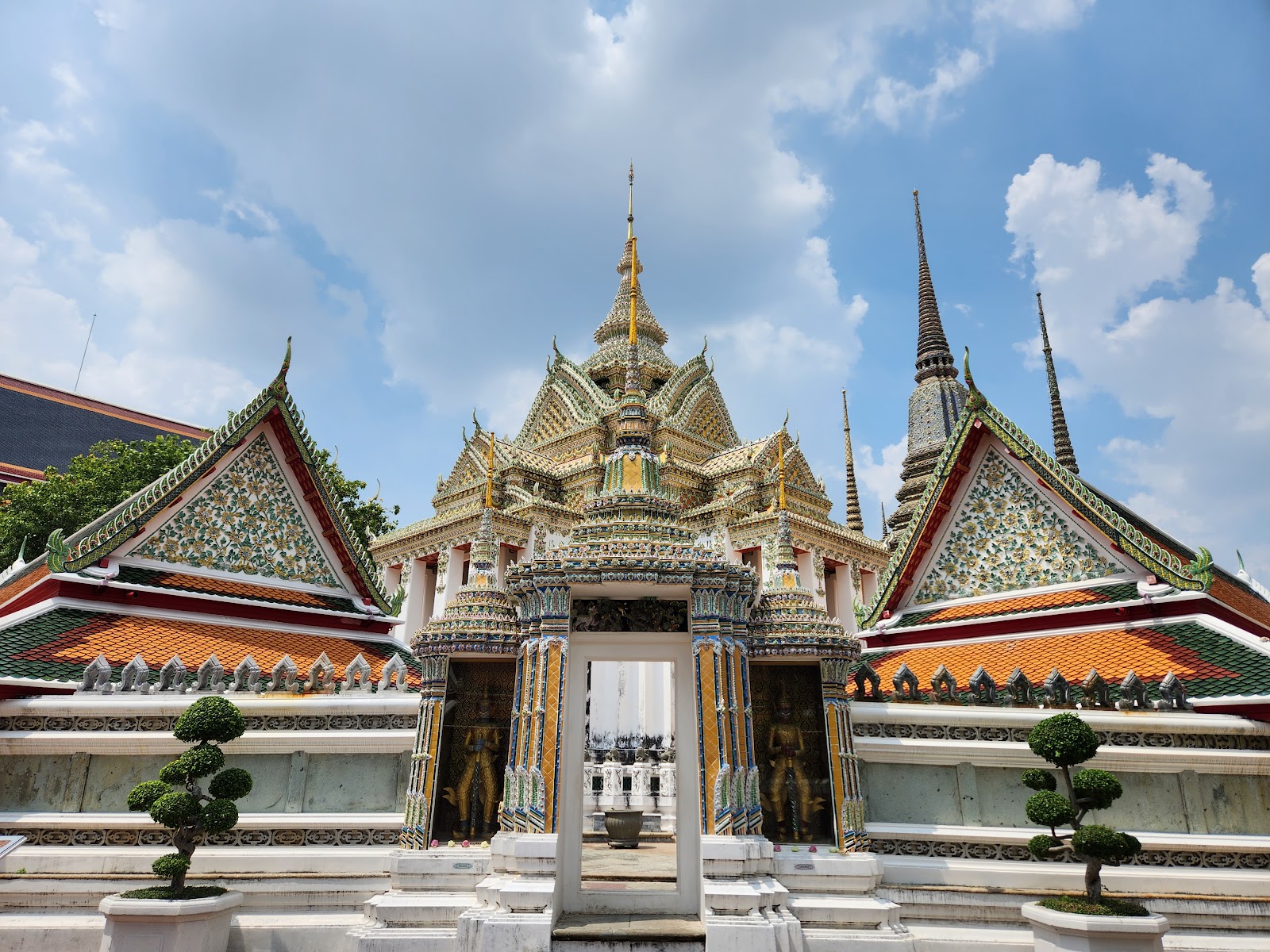
Wat Pho (Temple of the Reclining Buddha) (Source: Google Maps)
Wat Pho, also known as the Temple of the Reclining Buddha, is one of Bangkok's oldest and largest temples, established in the 16th century. It is renowned for its massive reclining Buddha statue, which measures 46 meters in length and is covered in gold leaf. The temple complex is a treasure trove of stunning architecture, featuring intricate murals, beautiful chedis, and over a thousand Buddha images. Wat Pho is also considered the birthplace of traditional Thai massage, and visitors can experience this unique art form within the temple grounds. The temple's serene atmosphere and rich history make it a must-visit for anyone interested in Thailand's cultural heritage.
Wat Arun (Temple of Dawn)
Cross the river to visit Wat Arun, known for its impressive riverside location and intricate spires.
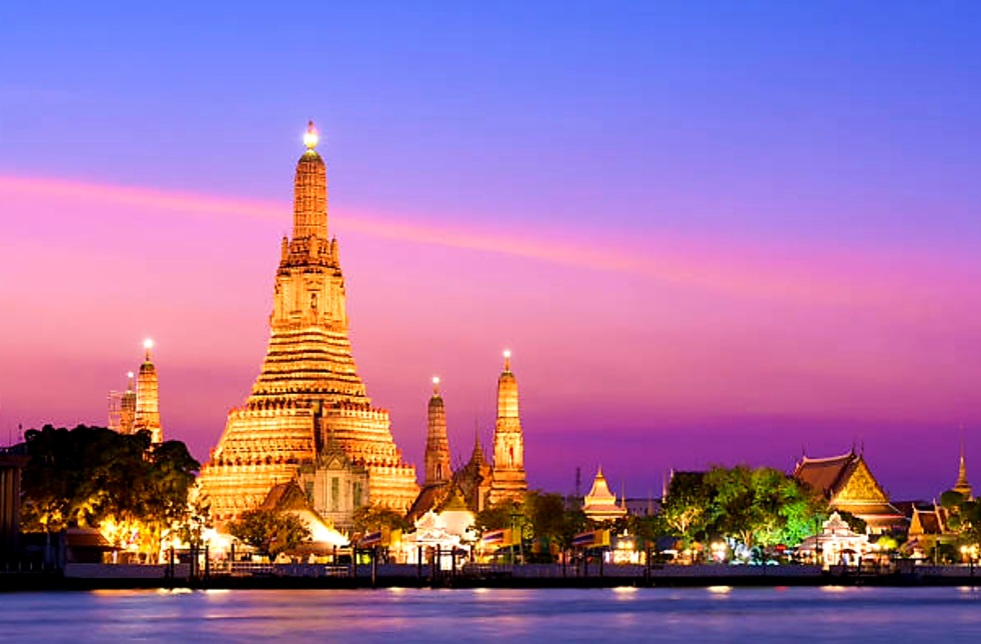
Wat Arun (Temple of Dawn) (Source: Google Maps)
Wat Arun, or the Temple of Dawn, is one of Bangkok's most iconic landmarks, situated on the western bank of the Chao Phraya River. Its striking design features a central prang (spire) that rises 70 meters high, adorned with colorful porcelain and seashells, which glisten in the sunlight. Originally built in the 19th century, the temple is dedicated to Aruna, the Hindu god of dawn. Wat Arun's unique architectural style represents the transition from Ayutthaya to the Rattanakosin period, showcasing the rich history of Thailand. The temple offers breathtaking views of the river, especially during sunrise and sunset, making it a favorite spot for photographers and travelers alike.
Grand Palace
Just a short walk away, the Grand Palace is a must-see for its opulent buildings and the revered Emerald Buddha.
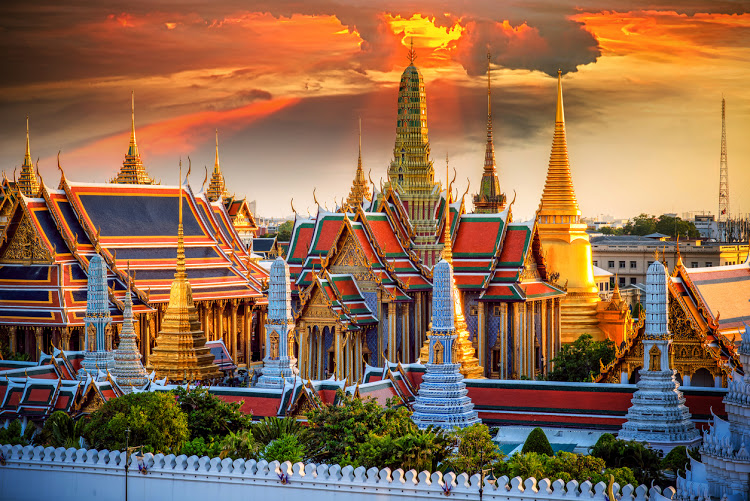
Grand Palace (Source: Google Maps)
The Grand Palace is an architectural marvel and a symbol of Thailand's royal heritage. Constructed in 1782, this sprawling complex served as the official residence of the Kings of Siam. The Grand Palace is a stunning example of traditional Thai architecture, featuring intricate details and vibrant colors. Within its grounds lies Wat Phra Kaew, home to the revered Emerald Buddha, Thailand's most sacred religious artifact. The palace grounds are adorned with beautiful gardens and elaborate structures, each with its own historical significance. Visitors can explore the various halls and temples, gaining insight into the country's rich royal history and cultural traditions.
Wat Phra Kaew (Temple of the Emerald Buddha)
Located within the Grand Palace complex, this temple is Thailand's most sacred, housing the Emerald Buddha.
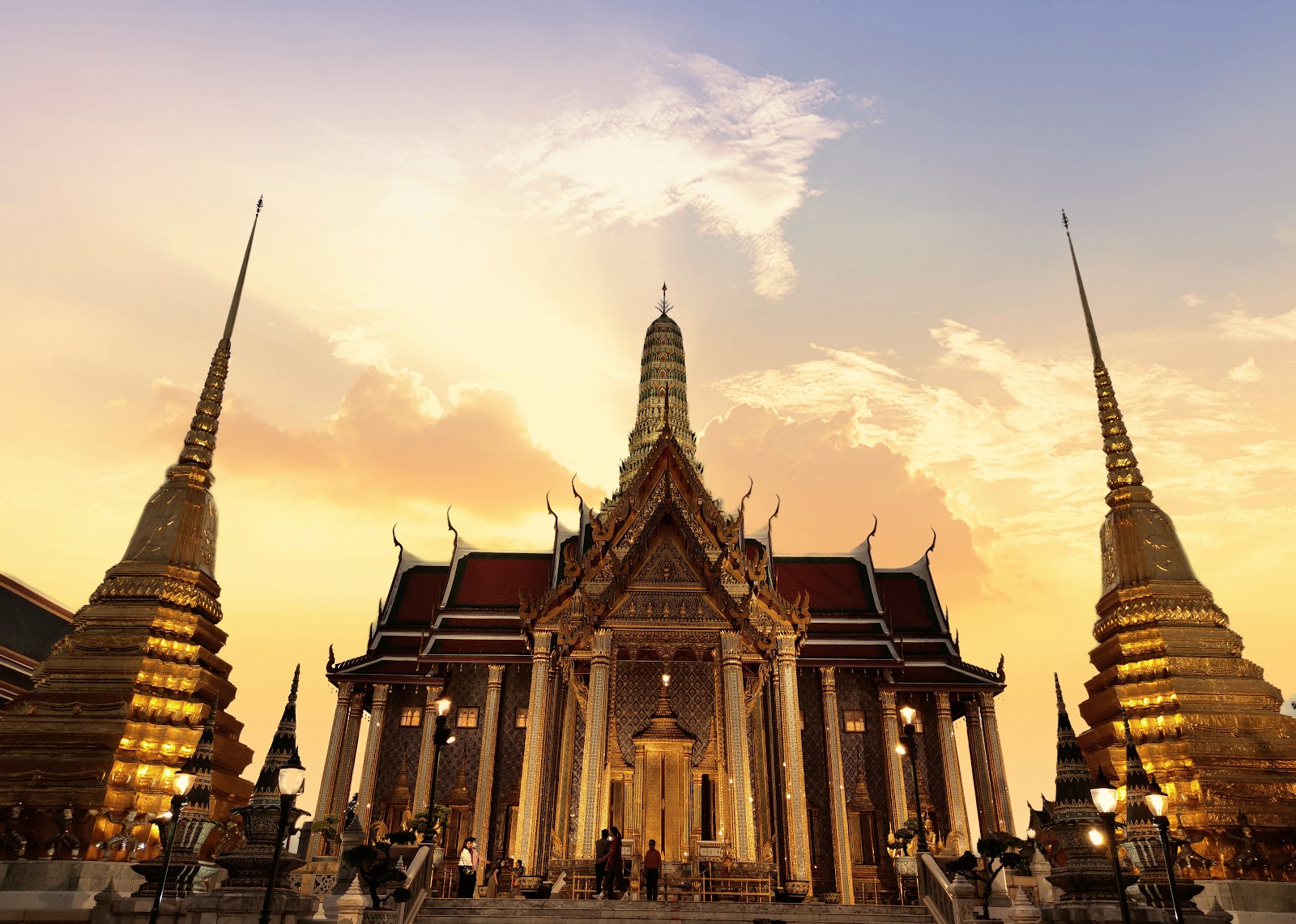
Wat Phra Kaew (Temple of the Emerald Buddha) (Source: Google Maps)
Wat Phra Kaew, located within the Grand Palace complex, is Thailand's most sacred temple, housing the Emerald Buddha, a highly revered statue carved from a single block of jade. The temple was established in 1784 and is adorned with exquisite murals depicting the life of the Buddha and intricate architectural details that showcase the artistry of Thai craftsmanship. The Emerald Buddha is dressed in seasonal costumes, changed by the King of Thailand, symbolizing the country's prosperity and the Buddhist faith. The temple's opulent design and spiritual significance make it a focal point of Thai culture and a must-visit for those seeking to understand Thailand's devotion to Buddhism.
Wat Ratchabophit
This lesser-known temple features a unique blend of Thai and Western architectural styles, with a beautiful circular courtyard.
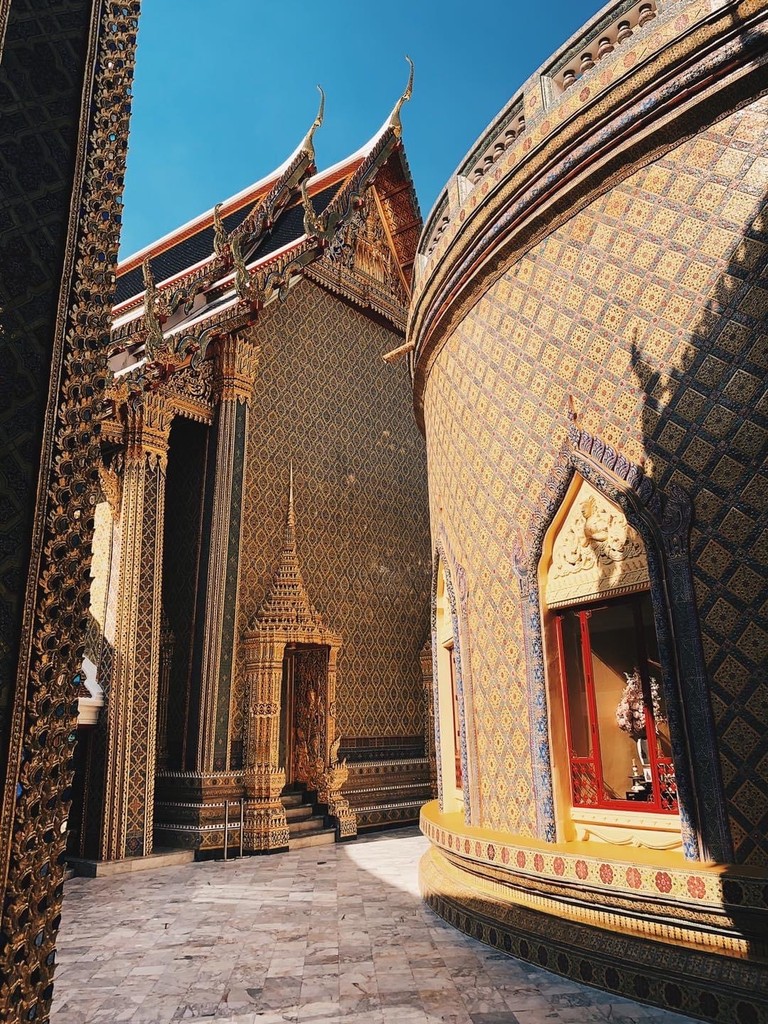
Wat Ratchabophit (Source: Google Maps)
Wat Ratchabophit is a hidden gem in Bangkok, known for its unique combination of Thai and Western architectural styles. Built in the early 20th century, this lesser-known temple features a stunning circular courtyard surrounded by beautifully designed structures. The main chapel, or ubosot, boasts a striking facade and intricate details that reflect both Thai and European influences. The temple's serene atmosphere and artistic design make it a peaceful retreat from the bustling city. Visitors can admire the beautiful murals that depict Buddhist teachings and explore the tranquil grounds, providing a glimpse into Thailand's diverse architectural heritage.
Wat Suthat and the Giant Swing
Explore Wat Suthat, known for its elegant architecture and the nearby Giant Swing, an iconic Bangkok landmark.
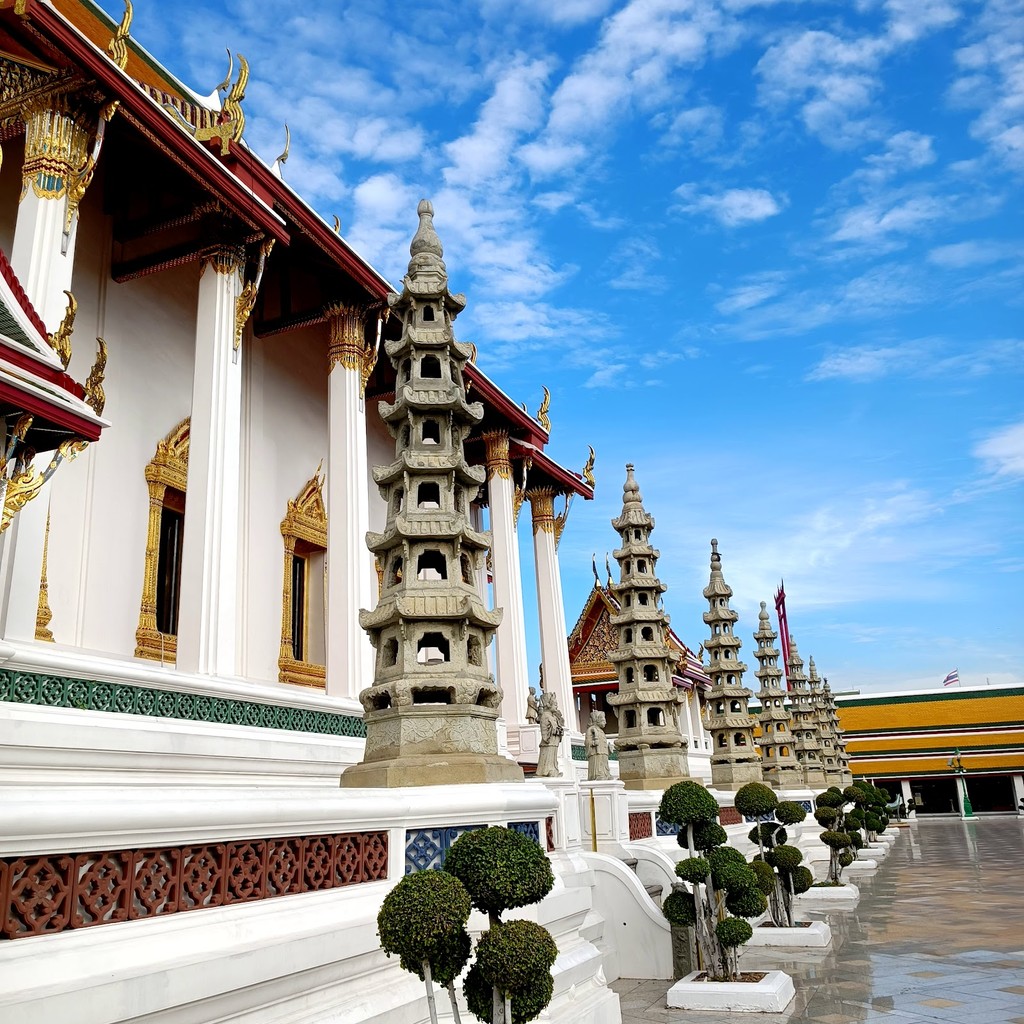
Wat Suthat and the Giant Swing (Source: Google Maps)
Wat Suthat, one of Bangkok's oldest temples, is renowned for its elegant architecture and historical significance. Established in the early 19th century, the temple features a striking red and gold facade, with a large Buddha statue at its center. Adjacent to the temple stands the Giant Swing, an iconic structure that was once used in a traditional Brahmin ceremony to honor the god Shiva. The temple is adorned with beautiful murals and intricate details, showcasing the artistry of Thai craftsmanship. Wat Suthat's tranquil atmosphere and rich cultural heritage make it a significant site for visitors interested in Thailand's religious traditions and history.
Democracy Monument
A brief walk brings you to the Democracy Monument, a significant historical site symbolizing Thailand's shift to a constitutional monarchy.
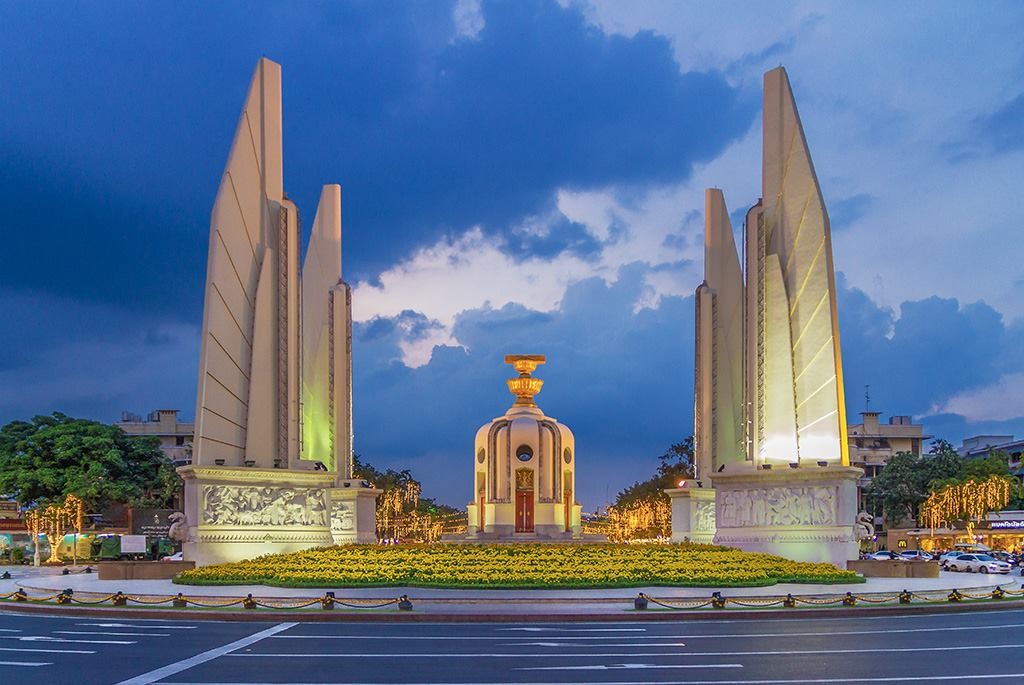
Democracy Monument (Source: Google Maps)
The Democracy Monument is a prominent historical landmark in Bangkok, symbolizing Thailand's transition to a constitutional monarchy in the 1930s. Erected in 1939, the monument features a central pedestal surrounded by four wings, each representing key elements of the Thai constitution. The monument is a site of political significance, often used for demonstrations and commemorative events. Its design incorporates elements of Thai architecture, blending traditional motifs with modern influences. Visitors can learn about the monument's historical context and its role in shaping Thailand's political landscape, making it a poignant reminder of the country's journey toward democracy.
Rattanakosin Exhibition Hall
Learn about the history of Bangkok and its cultural heritage through interactive displays at this exhibition hall.
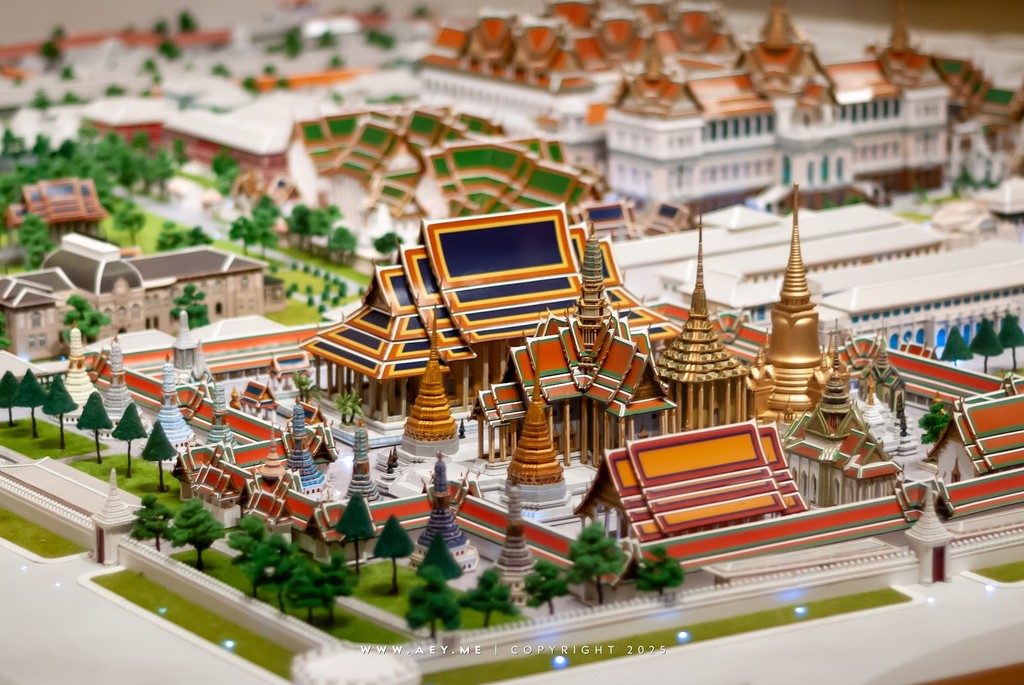
Rattanakosin Exhibition Hall (Source: Google Maps)
The Rattanakosin Exhibition Hall is a cultural hub dedicated to showcasing the rich history and heritage of Bangkok and the Rattanakosin era. The hall features interactive displays, multimedia presentations, and informative exhibits that delve into the city's past, from its founding in 1782 to the present day. Visitors can explore various aspects of Thai culture, including art, architecture, and royal traditions. The exhibition hall provides a comprehensive overview of Bangkok's evolution, making it an essential stop for anyone interested in understanding the city's historical significance and cultural development.
Loha Prasat (Metal Castle)
Discover Loha Prasat, a unique multi-tiered structure with a striking metal spire, offering panoramic views of the city.
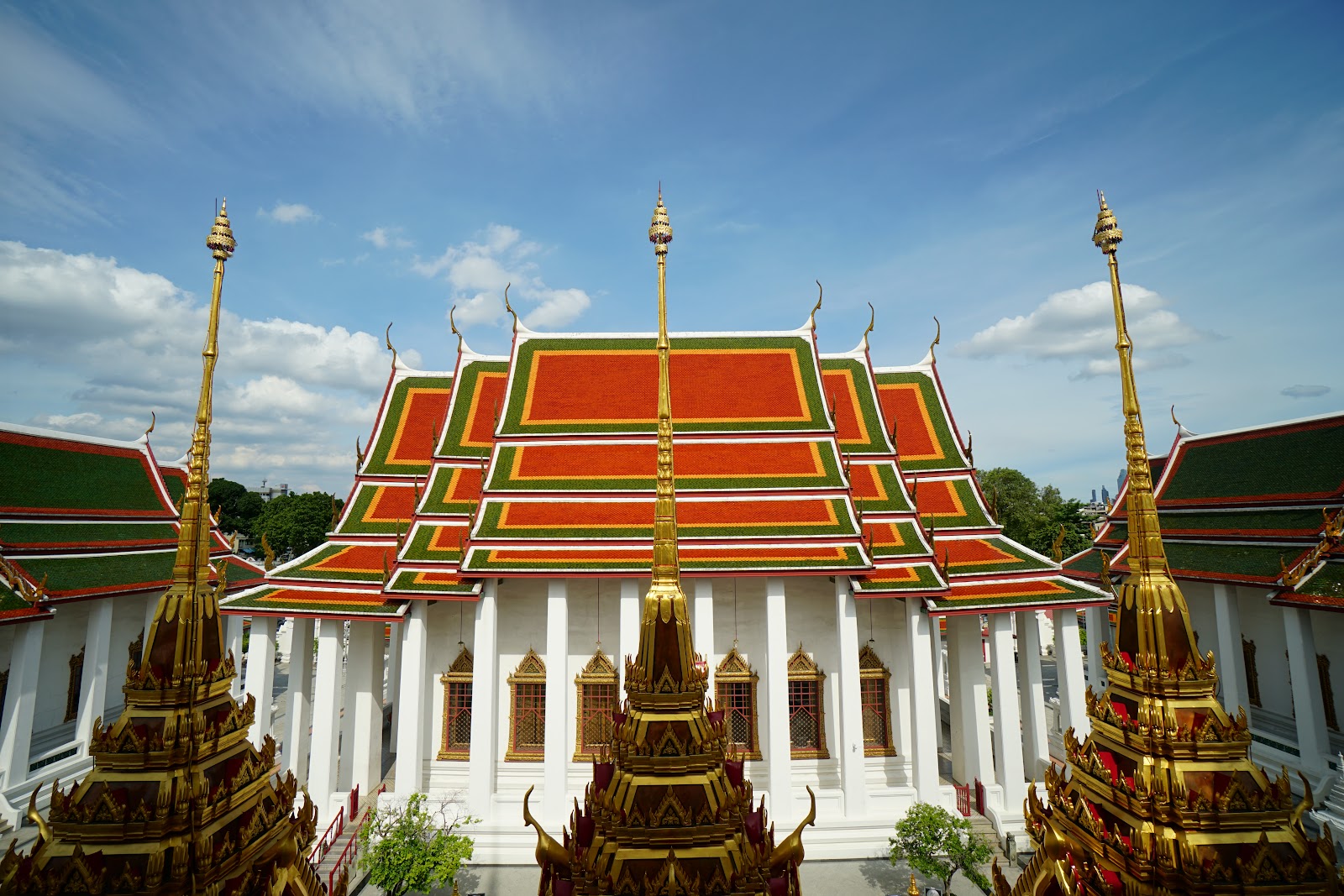
Loha Prasat (Metal Castle) (Source: Google Maps)
Loha Prasat, or the Metal Castle, is a unique architectural marvel located in the heart of Bangkok. Built in the 19th century, this multi-tiered structure is adorned with 37 metal spires, symbolizing the 37 virtues leading to enlightenment in Buddhism. The design is a rare example of metal architecture in Thailand and reflects the influence of ancient Indian styles. The castle's serene gardens and panoramic views of the city provide a tranquil escape for visitors. Loha Prasat is a UNESCO World Heritage site, recognized for its cultural significance and architectural uniqueness, making it a fascinating destination for those exploring Bangkok's historical treasures.
Wat Saket (Golden Mount)
Climb the Golden Mount for a stunning view of the city and to enjoy the peaceful atmosphere of this historic temple.
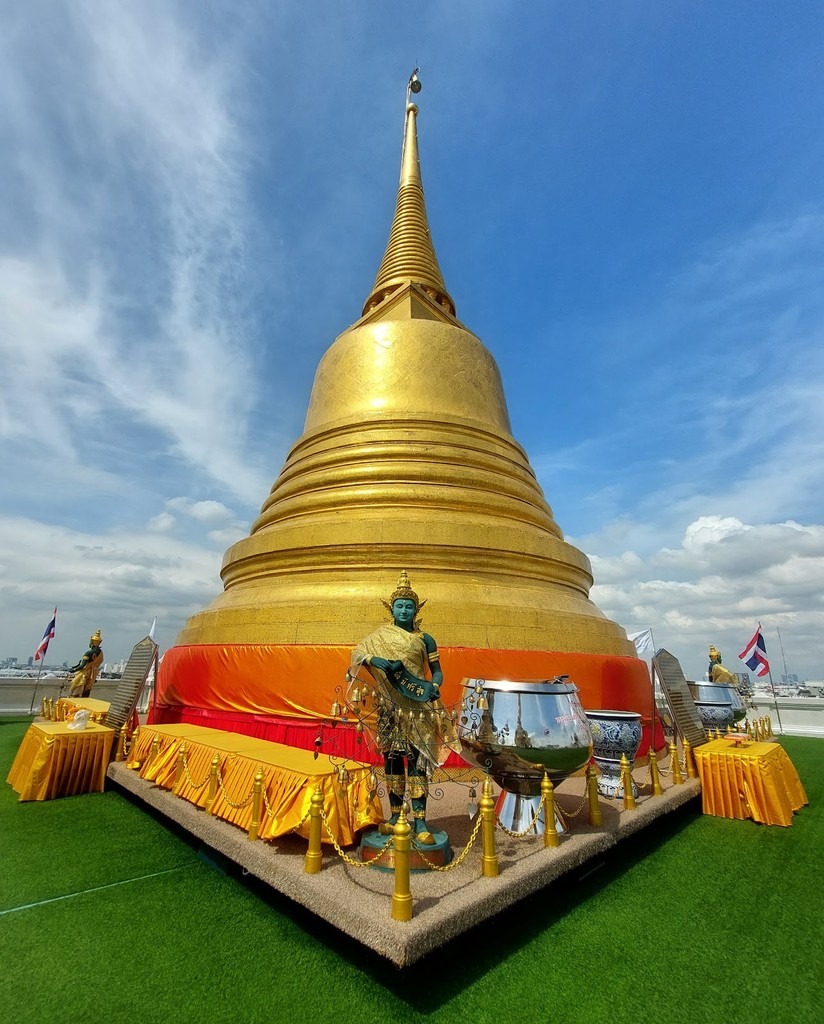
Wat Saket (Golden Mount) (Source: Google Maps)
Wat Saket, also known as the Golden Mount, is a historic temple perched atop a hill in Bangkok. The temple dates back to the Ayutthaya period and features a stunning golden chedi that can be seen from afar. Visitors can climb the winding staircase to the top, where they are rewarded with breathtaking views of the city skyline and the surrounding landscape. The temple is a serene retreat, offering a peaceful atmosphere for reflection and meditation. Wat Saket holds significant cultural importance, especially during the annual Loy Krathong festival, when locals and tourists alike gather to pay respects and celebrate Thai traditions.

Your travels, your rules.
Create your own Free Walking Tours.
Set your preferences, distances and anything you want to do or see.
Completely free, no payment required.